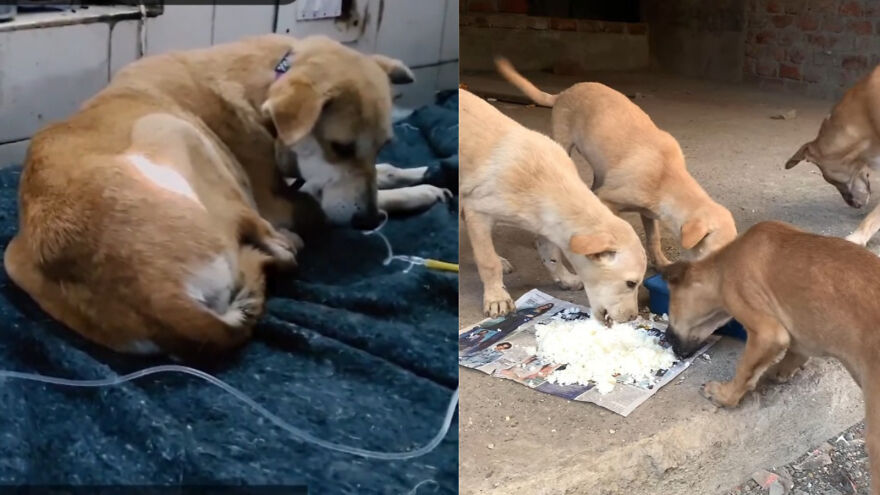Join Our Journey Of Feeding, Treating, Vaccinating And Helping Animals In Distress.please Donate A Little, Your Small Donation Will Make A Big Difference In These Voiceless Animals Life.
There are many ways we can help animals living in the wild and save them from the harms that they face in nature. In the long term, the only way they will eventually get the help they need is by us raising awareness of the plight of wild animals and the discrimination they suffer. But there are helpful things that can be done for them in the short term, too. Some people may want wild animals to be helped yet fear that we lack the knowledge to do it properly, and that we would do more harm than good. Fortunately, though, there are ways we can help animals using our current knowledge. There are already many examples we can draw upon. Many involve helping certain animals individually. Others involve helping large groups of animals, which can be done in scientifically informed ways in order to ensure that no negative consequences occur. Eventually, research on this problem could be established in academia, which could provide us with much better information on the best ways of helping animals living in the wild. Unfortunately, most people are still unaware of the different ways in which animals can be helped and are, in fact, currently being helped.1 We will now see some examples.
Cases of intervention to help animals
Many cases have been recorded in which animals have been helped in nature. Sometimes, small groups of individuals (or even just one person) have made a great difference to some animals by providing them with assistance. In other cases, animals have been helped thanks to the efforts of organizations or governments that have followed policies beneficial to animals, even even though the purpose of such measures was not to help them (for example, vaccinations of wild animals to reduce human health risks). Fortunately, to inform our efforts to help animals living the wild we can learn from these examples and from large amount of associated research.
Some of these efforts only affect small numbers of animals. We may therefore think that they are trivial and should not be taken into account. But they are not trivial, not only because they are obviously very important for the animals concerned, but also because these cases help to spread awareness that we can and should help animals living in nature, as well as showing some of the ways we can. Opening our minds to such possibilities makes it more likely that we will start to give aid to larger numbers of animals and in a greater variety of contexts.
Learn More :- http://fundrazr.com/HelpSaveAnimals
Help Save Street Animals
There are many ways we can help animals living in the wild and save them from the harms that they face in nature. In the long term, the only way they will eventually get the help they need is by us raising awareness of the plight of wild animals and the discrimination they suffer. But there are helpful things that can be done for them in the short term, too. Some people may want wild animals to be helped yet fear that we lack the knowledge to do it properly, and that we would do more harm than good. Fortunately, though, there are ways we can help animals using our current knowledge. There are already many examples we can draw upon. Many involve helping certain animals individually. Others involve helping large groups of animals, which can be done in scientifically informed ways in order to ensure that no negative consequences occur. Eventually, research on this problem could be established in academia, which could provide us with much better information on the best ways of helping animals living in the wild. Unfortunately, most people are still unaware of the different ways in which animals can be helped and are, in fact, currently being helped.1 We will now see some examples.
Cases of intervention to help animals
Many cases have been recorded in which animals have been helped in nature. Sometimes, small groups of individuals (or even just one person) have made a great difference to some animals by providing them with assistance. In other cases, animals have been helped thanks to the efforts of organizations or governments that have followed policies beneficial to animals, even even though the purpose of such measures was not to help them (for example, vaccinations of wild animals to reduce human health risks). Fortunately, to inform our efforts to help animals living the wild we can learn from these examples and from large amount of associated research.
Some of these efforts only affect small numbers of animals. We may therefore think that they are trivial and should not be taken into account. But they are not trivial, not only because they are obviously very important for the animals concerned, but also because these cases help to spread awareness that we can and should help animals living in nature, as well as showing some of the ways we can. Opening our minds to such possibilities makes it more likely that we will start to give aid to larger numbers of animals and in a greater variety of contexts.
Learn More :- http://fundrazr.com/HelpSaveAnimals





16
0